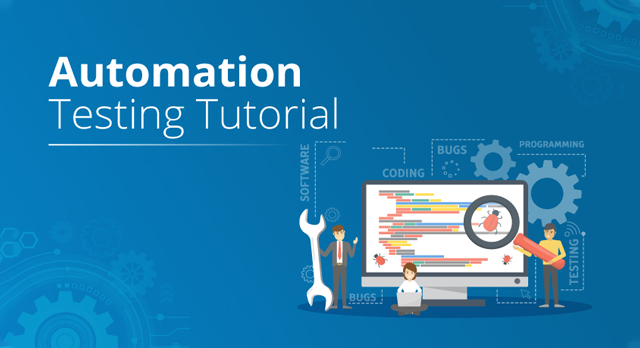Automation Testing Methods: Ideal Practices for Seamless Integration
From Handbook to Automated Testing: A Comprehensive Overview to Transitioning Smoothly and Efficiently
In the realm of software application screening, the shift from guidebook to automated processes has actually come to be a progressively vital shift for companies looking for to improve performance and accuracy in their testing methods. The trip from guidebook to automated screening is not without its challenges, yet when come close to purposefully and with a clear plan in mind, the benefits can be substantial.
Benefits of Automated Evaluating
Automated testing provides many advantages, boosting performance and precision in software growth processes. Automated tests can be run at the same time on several tools and operating systems, dramatically speeding up the screening stage contrasted to hand-operated screening.
Moreover, automated screening makes certain a higher degree of accuracy in discovering flaws. Consistency in screening is also improved, as automated tests implement the exact same steps precisely each time they are run.
Choosing the Right Devices

Firstly, evaluate your purposes and requirements. Recognize the scope of your job, the modern technologies included, and the ability of your team. This analysis will certainly assist you figure out the abilities and attributes you call for in your testing tools.
Secondly, consider the compatibility of the tools with your existing systems and procedures. Smooth combination with your current software development lifecycle is vital to make sure a smooth shift to automation.
Furthermore, assess the scalability and versatility of the tools. As your testing requires progress, the tools should be able to adjust and accommodate adjustments properly.
Lastly, consider the support and area around the tools. Durable assistance and an energetic customer area can offer valuable resources and help when applying automated screening. By thoroughly thinking about these facets, you can pick the right tools that align with your needs and established the stage for an effective shift to automated screening.
Composing Effective Examination Manuscripts

When crafting examination scripts, it is necessary to think about the details needs of the software program being examined and guarantee web link that the manuscripts address all critical capabilities. Clear and detailed naming conventions for test scripts and examination cases can boost readability and maintainability. In addition, integrating error handling mechanisms within the test scripts can help in determining and dealing with concerns without delay.
Additionally, arranging test manuscripts right into modular elements can boost reusability and scalability, decreasing redundancy and enhancing efficiency in examination script upkeep. Regular reviews and updates to evaluate manuscripts are critical to keep speed with developing software requirements and functionalities. By complying with these concepts, testers can develop reliable and durable test scripts that add substantially to the success of automated testing processes.
Integrating Automation Into Workflows
By seamlessly incorporating automated screening devices like Selenium or Appium right into the software application development lifecycle, groups can attain faster feedback on code modifications, leading to quicker insect detection and resolution. This integration enables for continual screening throughout the growth procedure, ensuring that any type of issues are recognized early on, resulting in higher software top quality. Proper integration of automation devices requires cooperation between development, screening, and procedures groups to establish a unified workflow that maximizes efficiency and efficiency in delivering top notch software products.
Making Certain a Smooth Shift
Successfully transitioning to automated testing involves careful planning and mindful execution to maximize and reduce interruptions effectiveness in the software program growth procedure - automation testing. To make certain a smooth transition, it is vital to start by carrying out a complete evaluation of the current testing procedures and recognizing areas where automation can bring one of the most considerable advantages. Involving with all stakeholders at an early stage at the same time, consisting of developers, testers, and project supervisors, straight from the source is vital for gathering support and buy-in for the automation effort
Interaction is vital throughout this shift phase. Clear communication of the objectives, advantages, and expectations of automated screening helps to manage any type of resistance or concerns that may occur. Furthermore, supplying ample training and sources for employee to upskill in automation tools and techniques is essential for guaranteeing an effective transition.

Final Thought
To conclude, transitioning from handbook to automated screening supplies many check that advantages, consisting of enhanced effectiveness and reliability. By choosing the appropriate devices, creating reliable examination scripts, and integrating automation flawlessly into process, organizations can make certain a effective and smooth transition. It is necessary to welcome automation as an important possession in software testing processes to improve general high quality and productivity.
In the realm of software program testing, the change from manual to automated processes has become a significantly essential shift for companies looking for to enhance effectiveness and precision in their testing practices. Automated examinations can be run concurrently on numerous gadgets and operating systems, considerably speeding up the testing stage compared to manual screening. Consistency in testing is additionally enhanced, as automated tests implement the exact same actions precisely each time they are run.To make certain the successful execution of chosen screening tools, the development of effective examination scripts plays a crucial role in confirming the functionality and performance of automated processes - automation testing. By adhering to these concepts, testers can create durable and effective examination scripts that add significantly to the success of automated testing procedures